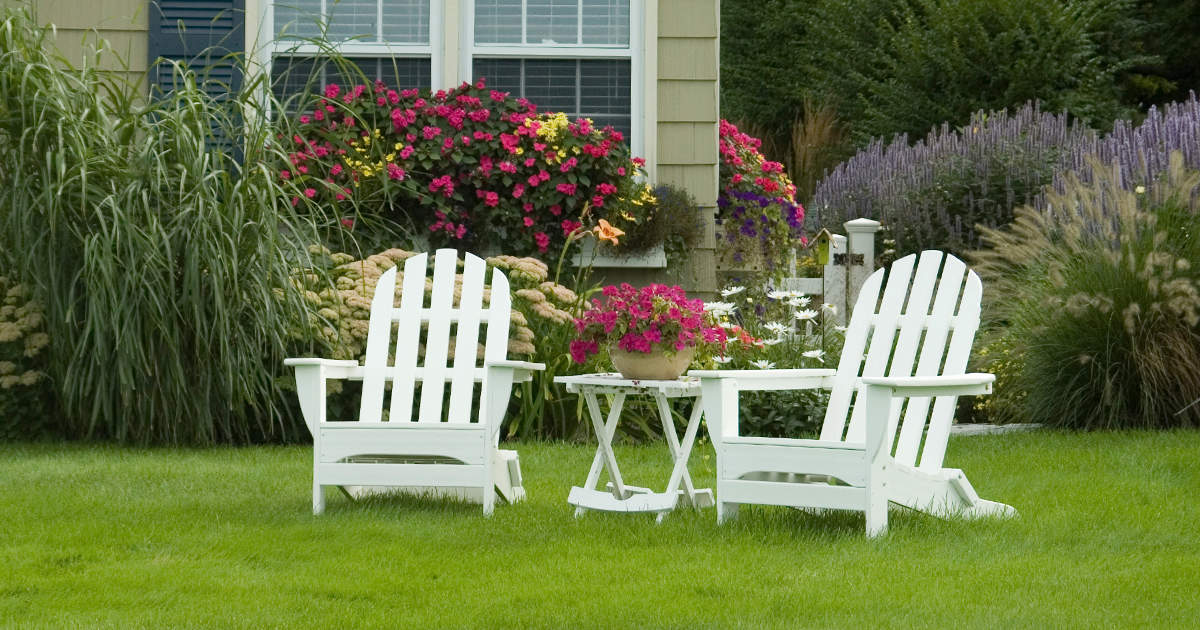Keeping your lawn green and lush can be challenging. There are pests to keep away, sunlight and water availability that fluctuates with the seasons, not to mention all those other little things that conspire against a perfect lawn. However, with the right approach and techniques.
Water, water, and more water
The most important part of any lawn care routine is water. Without water, your lawn will not only be shorter and less green, but it could also die completely. Watering your lawn correctly is essential for its health, so you’ll want to follow some simple watering tips to keep your lawn green and healthy.
Before you begin watering, make sure your sprinkler system is in good working condition. You may also want to consider installing a soaker hose or drip irrigation system to water your lawn more efficiently.
Aeration
Aeration is an important part of lawn care because it helps improve soil drainage and makes room for new root growth. This is especially helpful in areas that receive a lot of rain throughout the year, which can cause soil to become compacted and prevent water from properly reaching the roots.
You can aerate your lawn with a special lawn aeration tool, or by digging small holes with a pitchfork or shovel. At the very least, you should aerate your lawn once every two years. If your lawn is exposed to too much water, you should aerate it more often. Aerating your lawn can help lower the amount of water you need to use on your lawn.
Diverse grass types
As cooling temperatures arrive, you’ll want to make sure your lawn is prepared for fall and winter. This includes rotating your lawn so that you are growing different grass types every season. A lawn that is made up of different types of grass will be more durable and less susceptible to pests and diseases.
By rotating your lawn, you can also help prevent weeds from growing and flourishing in your lawn. If you notice weeds, you can spray them with an herbicide, but this is not the best long-term solution. The best way to prevent weeds is with lawn maintenance.


Weed control
Weed control is an important part of any lawn care routine. You can prevent weeds from growing in your lawn by maintaining the right amount of fertilizer, watering, and mowing. You can also use an herbicide to prevent weeds from growing on your lawn.
When choosing an herbicide, make sure it is safe for use on lawns, and follow the directions on the label carefully. It’s best to apply an herbicide in the fall before weeds begin to grow in the spring. This will ensure that any weeds in your lawn die before they have a chance to spread their seeds and make new weeds.
Mowing length
Mowing your lawn too short can damage the grass and make it more susceptible to pests and diseases. When mowing your lawn, you’ll want to make sure your mower is sharp, and you’re mowing at the recommended length for your lawn. If you have a new lawn, you may want to start off mowing it a little shorter until it has established itself.
If your lawn is growing quickly, you may want to mow it a little shorter. If your lawn is growing slowly or taking longer than usual to grow, you may want to mow it a little longer. Follow your local mowing company’s recommended mowing schedule to know how long you should mow your lawn at any given time of year
Be Proactive
There are a few important steps you can take at the beginning of each season to make the upkeep throughout the year much easier. First, aerate your lawn. This allows air, water, and nutrients to penetrate the soil, which is important for a healthy lawn.
Plus, it reduces thatch build-up and compaction. Next, top-dress your lawn. This means spreading a thin layer of compost and/or fertilizer over the lawn, which is a great way to give your lawn a nutritional boost and provide nutrients for the rest of the growing season.


Weekly Care Is Key
No matter what kind of lawn care regimen you follow, it’s important to pay attention to your lawn weekly. Keep an eye on your lawn for signs of pests and disease, and address them quickly. This prevents them from spreading to other areas of your lawn and makes the job much easier in the long run. You can also do a weekly mowing of your lawn, which will help keep pests at bay and prevent your lawn from becoming too thick.
Mowing Strategies
For most lawns, removing no more than one-third of the grass blade length at each mowing is usually sufficient. However, you may need to adjust that number depending on your soil type, your climate, and how quickly your grass grows. Taller grass can shade out weeds, but it also requires more water, so keep that in mind when deciding how long to leave your grass.
Fertilization Strategies
To keep your lawn thriving, it is important to fertilize it on a regular basis. There are a couple of different fertilization strategies that gardeners can follow. You can apply a one-time application of fertilizer to give your lawn a big boost at the beginning of the season or during a period of rapid growth, or you can follow a split application fertilization schedule, which involves applying half the fertilizer at the beginning of the growing season and the other half toward the end of the season.


Weed And Feed Strategies
To keep your lawn looking great, it’s important to control weeds. That’s why many lawn-care experts recommend a weed and feed strategy. This involves applying a weed-killing product, like glyphosate, as well as a fertilizer. Weed and feed products are helpful in that they are easy to apply, but it’s important to remember that they need to be applied in the spring and fall, so you don’t accidentally kill your lawn.
Dethatching Strategies
To maintain a healthy lawn, it is important to remove excess thatch from time to time. You can do this by dethatching your lawn once a year or once every other year. To do this, use a dethatching rake or a vertical mower, which has a built-in dethatching ability. This will help your lawn get more water, nutrients, and sunlight that it needs to thrive.
Irrigation Strategies
As you’re deciding how to water your lawn, it’s important to consider how much sunlight your lawn is getting. If your lawn is getting less sunlight than it normally would, you might want to consider watering it more often. Likewise, if your lawn is getting more sunlight than it normally would, you might want to consider watering it less often.
Conclusion
Keeping a lawn green and lush can be challenging, but with the right approach and techniques. Maintaining a healthy lawn is beneficial for more than just aesthetics. It can help reduce carbon emissions, improve air quality, and even assist with cooling down urban areas that are becoming increasingly warmer due to climate change.









